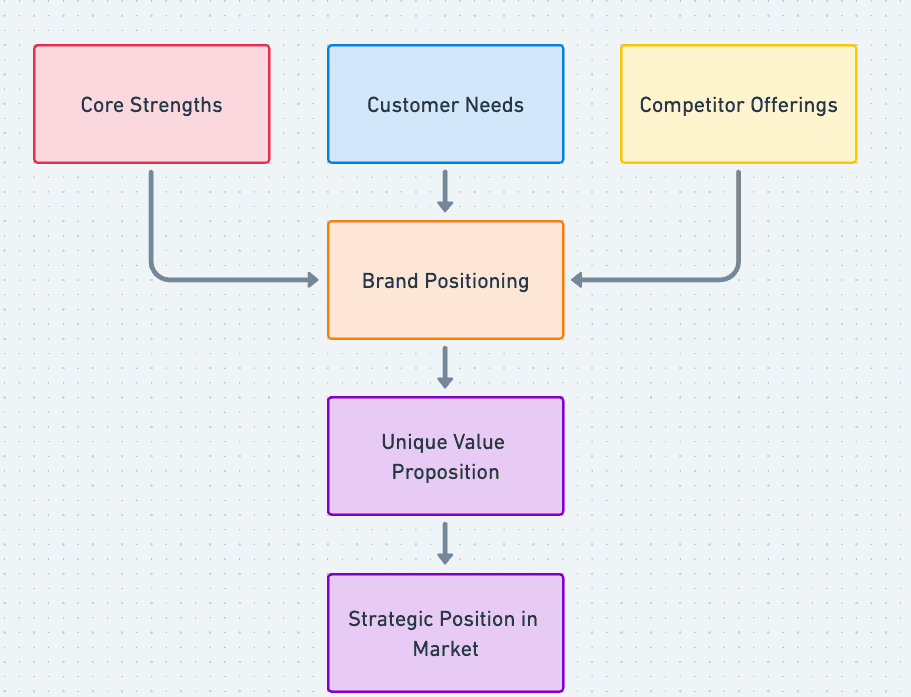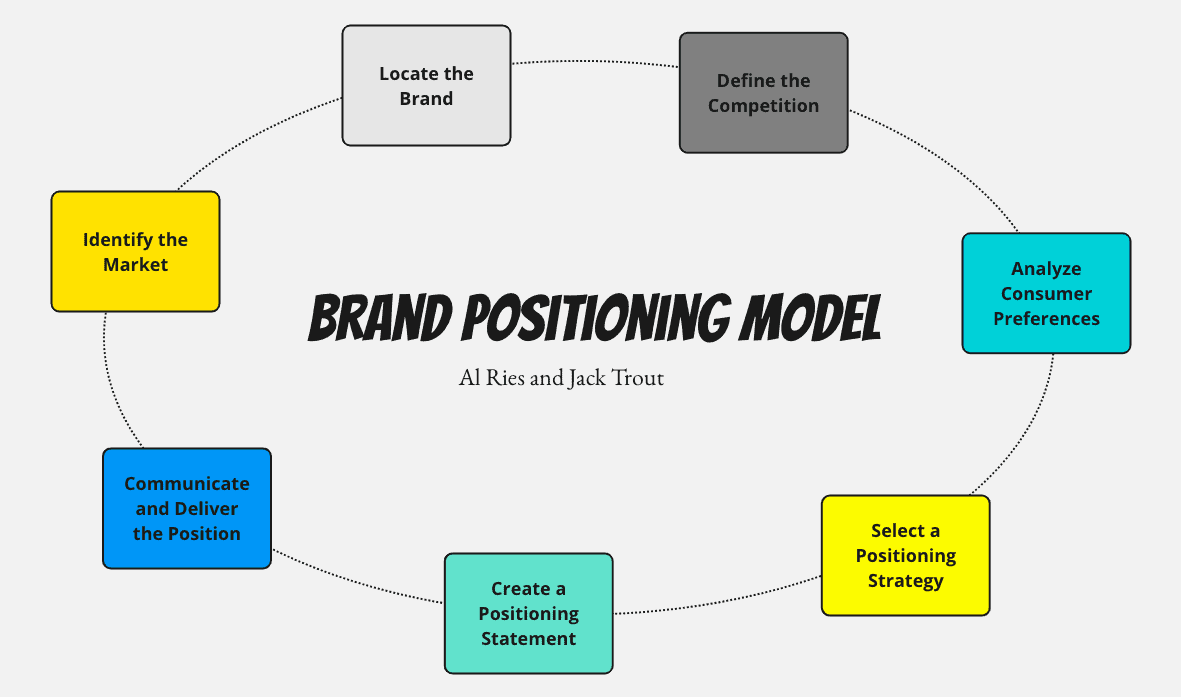The world’s most iconic brand, Apple, did not start as the tech and consumer electronics company we all love today. It was a computer company (literally named Apple Computer Company) focused primarily on producing computers. In the late 1990s, almost two decades after its founding, Apple repositioned its brand from a computer manufacturer to a lifestyle consumer electronics brand that embodies innovation, imagination, and design across a broad range of personal technology products.
This transition was marked by the launch of quintessential consumer electronics products like the iPod (2001), iPhone (2007) and iPad (2010). They even changed their name from Apple Computer Inc. to Apple Inc. in 2007. By repositioning itself as a consumer electronics brand that fits into an aspirational lifestyle, Apple transformed its brand perception and market position, leading to unparalleled growth and making it one of the most valuable companies in the world.
Long story short, how a business positions itself in a market defines its growth trajectory. Apple grew from $4.84 billion in revenue in 2006 to $383 billion in revenue in 2023, a 7,800% growth in less than two decades. This standout example shows how precise and refined brand positioning can lead to unprecedented growth. It would be foolish not to mention that Apple backed their positioning with the superior quality of its products, award-winning customer experience and constant innovation that changed the smartphone industry forever. How Apple delivered on its brand promise and maintained its leading position in the market is the stuff of fairy tales.
What is Brand Positioning?
Brand positioning is the art (& science) of identifying the playing field in which a business will operate and serve its customers better than anyone else. It is the craft of identifying your core product/service strengths, understanding what your competitors do best, understanding what your customers want, and then carefully positioning your business to fulfill those needs. The brands that are just starting out would do well by concentrating on the “unfulfilled” needs of the customers on their playing field. This is the easiest path for a new business to woo its early customers and gain ground in a competitive market.

Why Brand Positioning?
Brand positioning is one of the most pivotal steps in the brand strategy development process. For any brand to have greater odds of success, it needs to carefully & clearly define its strategic position in the market.
A 2008 Journal of Advertising Research study revealed a direct correlation between a company’s positioning strategy and its operational success. This analysis underscores the critical role that strategic brand positioning plays in enhancing a firm’s overall market performance. In another study focussing on the US retail stores, researchers identified that store brands (like Costco’s Kirkland) are strategically positioned closer to national brands to compete more effectively, indicating a positive correlation between strategic brand positioning and market performance.
Market Confusion and The Role of Brand Positioning
Market confusion occurs in a crowded marketplace where many businesses compete for the same customers, and customers struggle to differentiate between brands. Consumer confusion is compounded when brands fail to effectively communicate their unique value propositions, resulting in diluting brand equity.
A clear brand positioning can help a business address market confusion and present a clear and unified brand consistently across channels. Specifically, a well-thought-out brand positioning helps in:
- Brand Differentiation– Enables businesses to stand out from the competition by highlighting their unique attributes.
- Brand Consistency– A consistent brand reinforces brand identity and helps customers to remember and recognize the brand.
- Targeted Communication– Empowers businesses to tailor their messaging to resonate with their target audience’s specific needs and preferences.
- Brand Loyalty & Trust– A strategic brand positioning establishes documented frameworks that help a brand win loyal customers and earn their trust.
Brand Positioning Framework
Now that you are (hopefully) convinced about the powers of brand positioning, let us take you through one of the most influential brand positioning frameworks of all time. It is called the Brand Positioning Model, developed by Al Ries and Jack Trout in the 1980s in their seminal book Positioning: The Battle for Your Mind. The central premise of this model is that positioning is not what you do to a product but what you do to the prospect’s mind. It’s about finding a unique, ownable space in the consumer’s mind and defining how you want your brand to be perceived relative to competitors.
To clearly define your brand’s position in the marketplace, you would have to go through the following steps:
- Identify the Market: Understand the market, aka the playing field where the brand competes, including the market structure, segments, and dynamics.
- Locate the Brand: Analyze the brand’s current position in consumers’ minds. This includes understanding current perceptions, strengths, and weaknesses.
- Define the Competition: Recognize direct and indirect competitors, including an assessment of their positioning strategies and strengths and weaknesses.
- Analyze Consumer Preferences: Research and understand consumer preferences, needs, and the benefits they seek in the product category.
- Select a Positioning Strategy: Choose how the brand will be differentiated. Ries and Trout outline several positioning strategies, such as being the first in the category (positioning by category), positioning by benefit, use or application, targeting a specific user, against a competitor, or away from a competitor.
- Create a Positioning Statement: Develop a concise statement that communicates the unique value the brand offers, for whom, and how it’s different from the competition.
- Communicate and Deliver the Position: Implement the positioning strategy through marketing communications and ensure the product or service experience aligns with the positioning.

Why Clear Brand Positioning Matters More Than Ever?
Clear brand positioning matters more than ever in 2024 due to the rapidly changing market dynamics, increasingly discerning consumers and the meteoric rise of digital channels. Here are some common reasons why businesses need brand positioning:
- Increased Market Saturation– Post-COVID, everyone wants to be a founder and entrepreneur. Due to the deluge of entrepreneurs, the market in different industries is getting saturated.
- High Consumer Expectations– With increased consumer awareness and an insane amount of choices, the users of 2024 are high maintenance.
- Low Brand Loyalty—With diminishing purchasing power in recent years, brand loyalty has been on a steady decline, and users are increasingly ready to switch brands.
- Digital Noise– With so much content vying for user attention, brands are not able to cut through the clutter.
Brand Positioning for Small Businesses
For small business owners, the tales of Apple and Tesla are inspiring, but they don’t necessarily help in understanding how to apply these principles to their business. The use case is very different and doesn’t necessarily translate well for a small business. So the big question is, how critical is brand positioning for small businesses, especially in the trades and service industries?
The simple answer is that brand positioning is mission-critical for all businesses. It is a fundamental tenet of marketing strategy that decides whether your audience will remember your brand or will not even notice it exists. Let us take a simple example to illustrate.
Imagine your brand is like fishing in a crowded pond where everyone uses the same bait. Brand positioning is like using a unique lure that only attracts the type of fish you want. It ensures that even in a crowded market, your business catches the attention of the right customers, who are most likely to bite. We asked ChatGPT to visualize this example, and this is what it came up with.

Brand Positioning Fishing Metaphor
Don’t like fishing much? Let us take another simple example.
Think of brand positioning as the step in which you choose the right tools for your tool belt before heading to a job site. Just as you wouldn’t carry a paintbrush to install a roof, you position your brand to ensure you have the precise tools (services or products) your ideal clients need. This ensures that when they have a specific job in mind, your brand is the first one they think of because you’ve positioned yourself as the go-to expert for that particular problem.

Small Businesses Struggling without Brand Positioning
Here are the Coles notes on why brand positioning is essential:
- Differentiation in a Crowded Market: Small businesses in the service and trades industry often operate in highly competitive markets where distinguishing oneself is crucial. Brand positioning helps small businesses stand out by highlighting unique aspects of their service.
- Customer Trust and Loyalty: Trust is a fundamental currency for service businesses. Customers need to believe in the reliability and quality of the services provided. A well-crafted brand positioning strategy communicates not just what services are offered but also the values and commitment behind them, helping to build a strong emotional connection with customers.
- Marketing and Communication: Brand positioning provides a clear framework for all marketing and communication efforts, ensuring consistency across different channels and touchpoints.
Brand Positioning is a Journey
Defining a brand positioning is not a one-time task a business owner can set and forget. It is an ongoing process that requires timely review and adjustments to ensure that a business is relevant and can adapt to changing market conditions. No incumbent of a particular market should feel too comfortable with their position. We have great examples of brands like Blackberry & Nokia who lost their leading market positions by not timely adjusting their positioning strategy. This is why it is mission-critical for businesses to be as accurate as possible when defining their brand positioning.
Don’t know how to position your brand in an ever-competitive business environment? Contact us to find out how we can help.
Photo Thumbnail Credit: Leeloo The First from Pexels.
